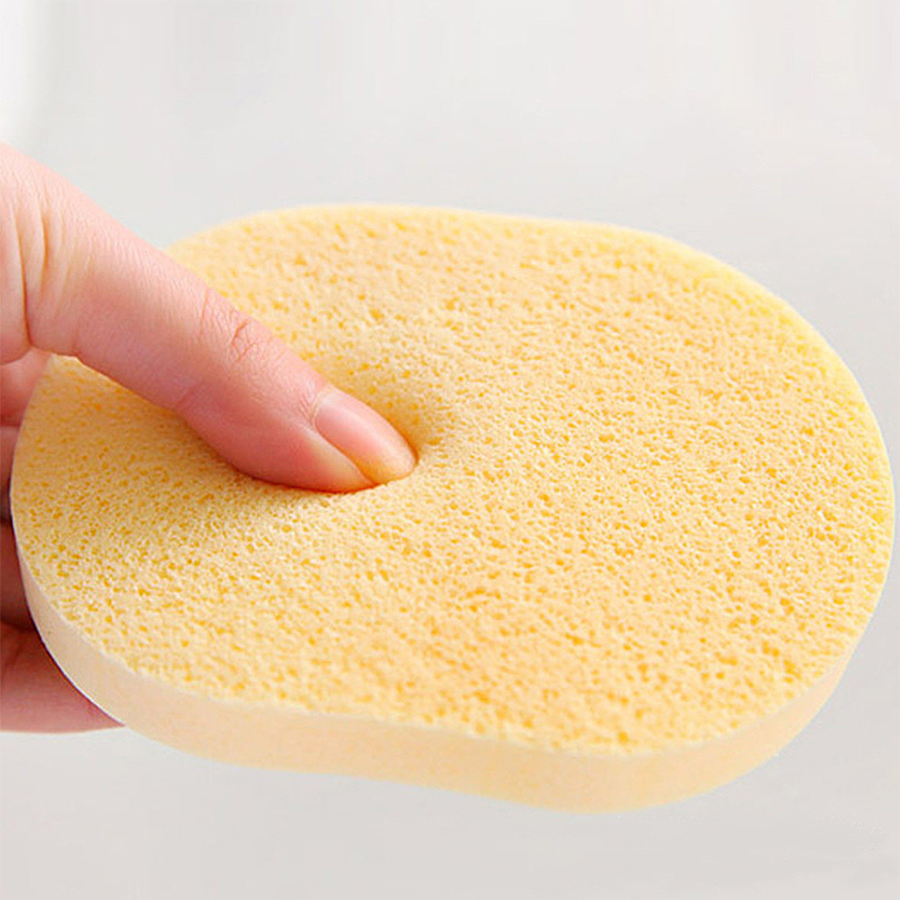Sponges help keep homes spic and span but the down side is that this cleaning tool can dirty up the environment. Many cleaning sponges are made of nonbiodegradable plastic, which means that something you use for just a couple of weeks will be taking up space in landfills for hundreds of years. Fortunately, keeping your home clean doesn’t have to take a toll on Mother Earth.
Instead of buying nonbiodegradable sponges, you can use cellulose sponges. They can do the dirty work of sopping up spills but are made of earth-friendly, biodegradable materials.
An Absorbing History
Sponges have pores that suck in water and swell, holding in the water until it’s squeezed out. Sponges have been used in various ways since ancient times, and the original versions were harvested sea sponges. Throughout history, these animal sponges have been used as a cleaning tool and even as a tampon; Ancient Romans used sponges tied to sticks as toilet paper. Because of the slow-growing sponges’ amazing capabilities, supply nearly couldn’t keep up with demand—that is, until the synthetic sponge was invented. Some sources say foam sponges were accidentally invented by a German scientist in 1937; others say the first synthetic sponge made of cellulose, sodium sulphate, and hemp fiber was invented by a company called Du Pont in the 1940s. Either way, manufactured sponges became cheaper and more convenient options than harvested sea sponges.
What Is a Cellulose Sponge?
A cellulose sponge, as its name connotes, is made of cellulose (the material that makes up the walls of a plant cell) mixed with hemp fibers and sodium sulphate crystals. It’s heated up, cut to size, bleached, and rinsed. Is a cellulose sponge biodegradable? Yes, because it’s made up of plant fibers, it’s biodegradable and thus much kinder to the environment. (Just make sure you’re getting one that hasn’t been mixed with a nonbiodegradable synthetic material.)
The problem with cellulose sponges is since they’re made of natural materials, they’re more prone to absorbing food particles and germs. Because of their very nature of soaking things up, sponges of any material tend to trap bacteria as well, so it’s very important to disinfect and replace sponges regularly, especially those used in the kitchen.
Sponge Safety
To make sure your sponges aren’t harboring harmful bacteria, keep the following tips in mind:
Use different sponges for different jobs. It goes without saying that sponges for the kitchen should be kept separate from bathroom sponges. But even various kitchen sponges should be assigned different tasks. The sponge you use for sopping up spills on kitchen counters should not be the same one you use for washing dishes. If you’re cleaning up meat or poultry juices, it’s also best to use paper towels to avoid cross-contamination.
Clean sponges regularly. After use, make sure you rinse out all food particles and let the sponge dry thoroughly. Then give it a daily deep cleanse. It seems time-consuming but sanitizing your sponges daily can safeguard your health by helping keep you safe from food-borne bacteria, plus it can even stretch the life of your sponge (less waste!). If you can’t be bothered with a daily cleaning, you can at least go for once a week.
How do you clean a cellulose sponge? There are a number of ways:
- • Experts recommend soaking a sponge in a mixture of one part bleach and nine parts water for a couple of minutes. Wring it out then air dry. In one test, this method killed 99.9% of three bacteria strains, which is the Environmental Protection Agency’s benchmark.
- • Saturate sponge with water (around ½ cup for a cellulose sponge), and heat on high in the microwave for 30 seconds or so. Make sure your sponge has no metallic scrub attached to it and keep a close eye on it as sponges may catch fire.
- • Soak sponge in full-strength vinegar for five minutes. Rinse.
- • Washing machine. Toss it in with a load of your whites. Don’t forget the bleach!
- • If you’ve got a dishwasher, you can add your sponge to a load of dishes and set the machine to its hottest setting.
Whichever method you use, make sure you wring out the sponge and air dry—a wet sponge is a breeding ground for even more bacteria.
Replace frequently. If you sanitize your sponges daily, some experts say they could last for about a month. Otherwise, you may want to replace them every week or two. Of course you should toss out a sponge that’s begun to smell funky (that means it’s loaded with bacteria), that has food particles that you can’t seem to dislodge, or that’s showing signs of wear and tear. If you’ve been using a cleaning sponge in the kitchen for a few weeks and it still looks OK, you might want to move it to bathroom duties instead.
Now that you’ve soaked up the cellulose sponge benefits, you might want to consider using this earth-friendly kitchen product.
sources:
http://www.cienciahistorica.com/





